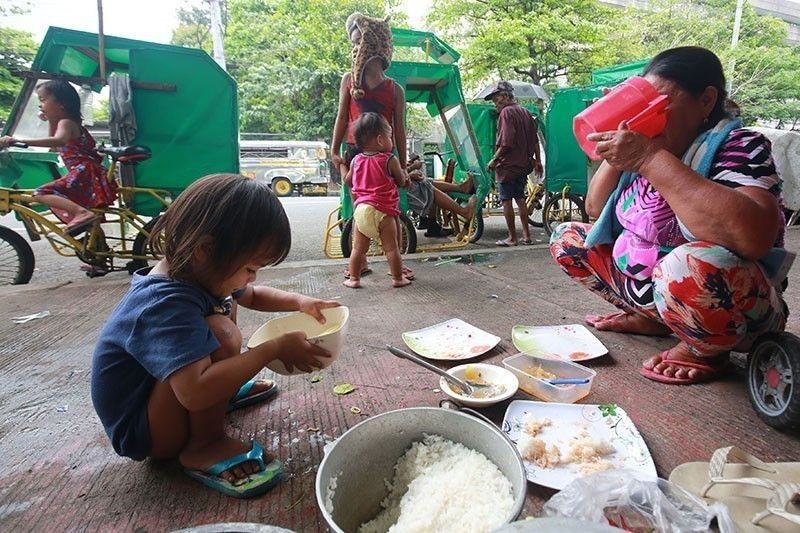A lot of work needed to address hunger – Palace

MANILA, Philippines — More work needs to be done to address hunger in the Philippines, Malacañang said, after a recent nationwide poll indicated that almost a third of Filipinos consider themselves “food poor.”
A Social Weather Stations (SWS) survey conducted from April 28 to May 2 found 32 percent of respondents saying they are “food poor,” 23 percent regarding themselves as “not food poor,” and 45 percent placing themselves on the borderline.
Nearly half or 49 percent considered themselves as poor, 33 percent thought they were on the borderline, while only 17 percent viewed themselves as “not poor,” according to the poll, which had 1,200 respondents.
Cabinet Secretary Karlo Nograles, who also heads the government’s anti-hunger task force, said the 32 percent who viewed themselves as “food poor” represented a significant number of families.
“While it’s true that we have made some progress in addressing hunger, these figures indicate that we still have a lot of work to do,” Nograles said in a statement issued yesterday.
Nograles noted that while self-rated food poverty between November 2020 and May 2021 went down by five percentage points in Metro Manila and four points in the Visayas, it was steady in the rest of Luzon and increased by 11 points in Mindanao.
“We will really have to focus on Mindanao and explore what interventions can be made to address hunger in the South,” he said.
Nograles said the self-rated food poverty for the month of May was close to last year’s average self-rated food poverty rate of 31 percent “given the limitations in livelihood as a result of pandemic restrictions.”
He claimed that the creation of the Zero Hunger Task Force and efforts by the agriculture department to improve local food production may have helped prevent self-rated food poverty numbers from increasing.
Nograles assured the public that the government would continue to ramp up efforts to make food affordable, accessible and available. He added that the government’s anti-hunger task force is looking closely at the recent self-rated food poverty survey data to identify the areas of concern that need to be addressed.
“We also believe that there is growing evidence that tells us that the government should stay the course in its programs while stepping up efforts to stamp out hunger,” Nograles said.
Job losses, high food prices
Meanwhile, the United Nations World Food Program (WFP) has warned that a record 270 million people worldwide are estimated to be acutely food insecure or at high risk this year, a 74 percent jump from 2020, driven by the socioeconomic fallout from COVID-19 and food price hikes.
The rise in the number of people to be acutely food insecure is also driven by conflict, economic fragility and the impacts of La Niña that are making nutritious food unaffordable for millions of families struggling to cope with income losses caused by the pandemic.
The WFP said job losses caused by the COVID-19 pandemic combined with high food prices are making it hard for millions of families to get enough to eat.
“High food prices are hunger’s new best friend. We already have conflict, climate and COVID-19 working together to push more people into hunger and misery. Now food prices have joined the deadly trio,” said WFP chief economist Arif Husain.
“If you’re a family that already spends two thirds of your income on food, hikes in the price of food already spell trouble. Imagine what they mean if you’ve lost part or all of your income because of COVID-19,” he said.
After rising for 12 consecutive months, food prices dropped slightly in June, reaching 124.6, just below the peak of 136.7 a decade ago. At the same time, the cost of a basic food basket has risen by more than 10 percent in nine of the more than 80 countries where WFP operates. – Pia Lee-Brago
- Latest
- Trending

























